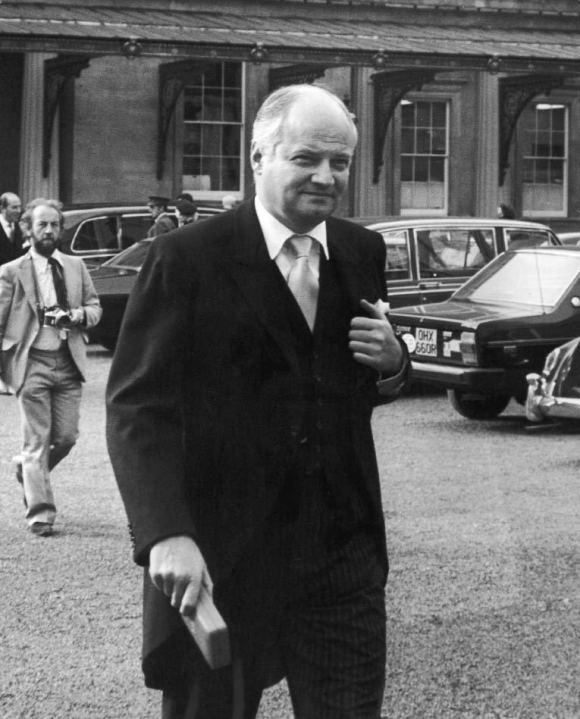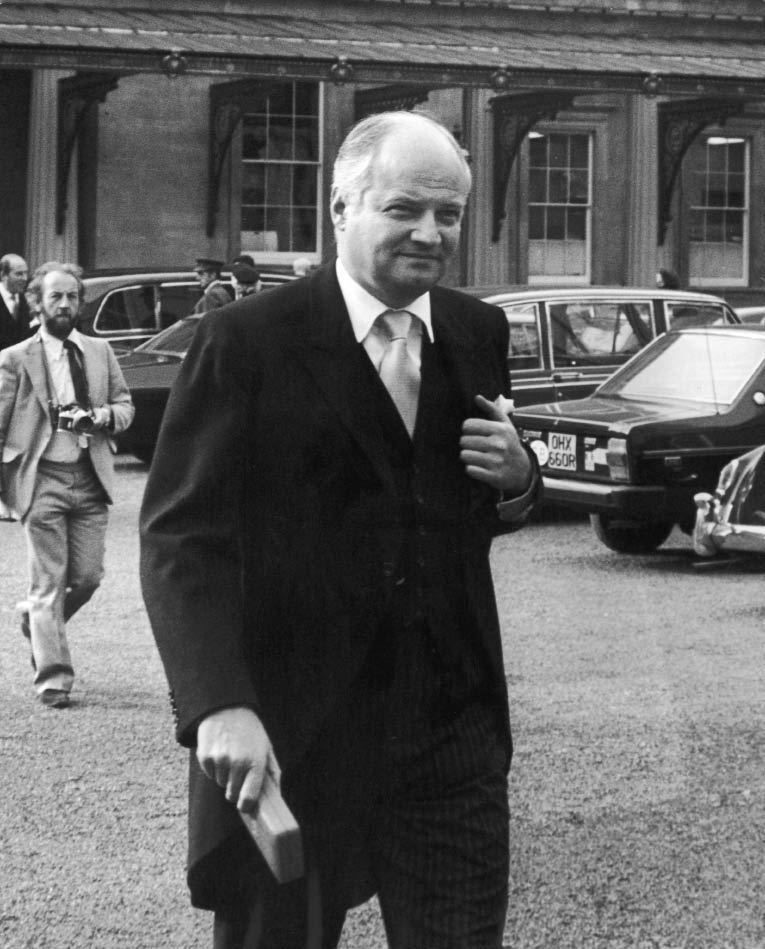Richard Northedge has unearthed confidential papers that reveal the Bank of England and the Treasury at loggerheads over a banking collapse 35 years ago
In the permanently uneasy truce between Threadneedle Street and Whitehall, Bank of England governor Mervyn King has never been shy of publicly criticising the Treasury. But confidential files on a banking crisis of 35 years ago show that private comments between the two institutions can be even more caustic. A civil servant’s handwritten note on a letter from the Bank during the Slater Walker crisis in 1975 says, ‘Read this and weep.’ His boss scribbles back: ‘I have read — and spat blood at this unjustified complacency.’
Over the previous decade, the firm of Slater Walker had grown spectacularly to become not only a bank but also an investment and insurance empire with stakes in industrial companies. Its bubble burst when the group could not refinance its debts in the aftermath of the secondary banking crisis of 1973-74. Founder Jim Slater had to quit — just as the heads of HBoS and Royal Bank of Scotland departed more recently — but the Bank feared his resignation would cause a run on Slater Walker. So, just as with Northern Rock in 2007, the Bank provided a loan to keep it afloat.
But Jim Slater’s replacement by Jimmy Goldsmith — who ran a byzantine Anglo-French conglomerate of businesses — caused consternation in Whitehall, where the new boss was regarded with as much suspicion as the old. ‘I am surprised to see Mr Goldsmith appointed chief executive,’ wrote one civil servant. ‘He is hardly a noted banking figure and indeed, his reputation, as far as the general public is concerned, is that of a playboy and speculator.’
The Treasury mandarin made clear who should be blamed for the appointment. ‘Given the history of City characters that have come a cropper and whom the Bank may have misjudged (Pat Matthews?) I hope that the Bank — who are up to their neck in Slater Walker — are fully satisfied that Mr Goldsmith is a proper person to become chairman.’ Matthews was the financier who ran FNFC, a secondary bank already in the Bank’s rescue ‘lifeboat’.
A meeting between Sir Douglas Wass, permanent secretary of the Treasury, and Gordon Richardson, the Governor of the Bank who died last month aged 94, was suggested, ‘given the sorry history in this field’. The Bank replied that it thought Goldsmith had the qualities to tackle the formidable task and a later note adds: ‘It is apparently the Governor’s view that Mr Goldsmith has reached the stage of his career at which he now wishes to become a respectable City figure rather than a “whiz kid”.’
Yet just two months after his Slater Walker appointment, Goldsmith began his vindictive criminal libel case against Private Eye over his link with the missing Lord Lucan. And shortly afterward he appeared on the notorious ‘lavender list’ of Prime Minister Harold Wilson’s resignation honours, though he was not regarded as sufficiently respectable for the proposed peerage.
The problems faced by the Bank and the Treasury back then parallel closely those of the recent crisis. Slater Walker’s banking arm could not be allowed to collapse because it held public deposits; and the rescue had to include the rest of the group because it held many millions of investments for and on behalf of savers and life-policy holders. Questions were asked about the wisdom of permitting such diverse activities within a single group — just as today there are calls for a new Glass-Steagall Act to separate risky securities activities from retail deposit-taking.
The Bank lent £70 million for the rescue and guaranteed another £40 million — about £1 billion in today’s money. Yet just as the Bank did not reveal until last November its secret loans to bail out HBoS and RBS, it kept mum on the Slater support. ‘This standby arrangement will not be made public,’ says a note on the Treasury file. ‘What if there are questions from the press?’ asked an official. The answer was to hope the complexity of the case would confuse the journalists.
Nor were MPs to be told the whole story. A parliamentary question from Labour backbencher Dennis Skinner asked Chancellor Dennis Healey if the Bank had consulted him on the rescue. A carefully crafted response said the Chancellor was aware of the general approach — but Sir Douglas Wass suggested Healey omit an additional sentence: ‘My specific approval of the stability loan facility and guarantee was neither sought nor required.’ This might intensify pressure for tighter control of the Bank, suggested Wass. Treasury assistant secretary Ros Gilmore had a hand in the Healey answer too, noting: ‘The original Bank draft was long — and we revised it partly because the tone seemed to us, perhaps, a trifle condescending.’
That summarised Whitehall’s view of the Bank. The letter that made the Treasury weep and spit blood came from Rodney Galpin, then the Bank’s head of money-market supervision and later chairman of Standard Chartered. Asked to detail ways to prevent a Slater situation recurring, he eventually sent a two-paragraph reply: ‘I hope you will not find this response unhelpful but I do believe it would be wrong to make specific proposals at this stage.’
The Treasury certainly did consider it unhelpful. ‘We have asked the Bank for an analysis of the problems underlying the collapse but this has not been forthcoming,’ fumed one mandarin. ‘The Bank claims to have taken on board a number of lessons from this affair,’ wrote another, concluding sarcastically, ‘we can only wait and see.’
As with the recent crisis, the cost of supporting Slater Walker was initially underestimated. The Bank first guessed that liquidation would mean a loss of £10-£15 million, while the support operation would cost nothing. Later it briefed the Treasury that Goldsmith was hopeful Slater Walker could shed the guarantee ‘in a matter of months rather than years. If this happens, the Bank would have made no loss on its operations.’
But of course it took longer and the losses not only made Slater Walker insolvent but threatened the Bank itself. ‘The Governor was faced with the choice between cutting his losses and placing more cash with Slater Walker… In either case, the Bank of England’s capital and reserves (£118 million) were seriously at risk,’ warns the Treasury, worried the government would have to inject new capital and lose dividends from the Bank.
As estimates of the losses rose to £45 million, the Bank’s concern became how to hide them. Treasury undersecretary Sir Geoffrey Littler noted that the Bank was ‘being careful to avoid any overt indication… because of the risk of impact on the repayment dates of certain loans to Slater Walker.’ That might fool the markets but there was the public to hoodwink too. The Bank admitted to a ‘presentational problem’ when the cost of buying Slater’s properties more than doubled. ‘The figures of possible losses mentioned in this note are particularly sensitive and should not be quoted or indicated in any context whatever.’
With provisions reaching £66 million, it was decided the Bank’s annual accounts would look better if the loss was offset against profits on gilt operations. ‘It would be possible to say that the cost to the Bank of liquidation now was less than it would have been in 1975,’ suggested one minion.
But however it was spun, Slater involved a significant loss and the same question was asked then as now: how can banks be bailed out when real businesses struggle for funds? Or as Labour MP Frank Hooley put it in a private letter to Healey: ‘H ow is it that £70 million of public money can be used to prop up a **** **** like Jim Slater while the National Enterprise Board is having to make do with quite inadequate resources? Why is it that the Bank of England can rescue any lousy City **** while manufacturing companies in difficulty have to beg and plead and argue for the odd couple of million to help them out — which is then made available on the most stringent of terms?’
Jim Slater is still an active investor at 80 and chairs a firm advising on Brazilian agriculture. Most of the civil servants in this story have long vacated their offices — but one of the Treasury’s rising stars was called Steve Robson. As Sir Steve he became the mandarin responsible for implementing the ‘tripartite’ structure of financial regulation that was to prove so inadequate in the recent crisis, and after leaving Whitehall he was a Royal Bank of Scotland director until it collapsed. Did he learn nothing from the all those Slater Walker memos he wrote?






Comments